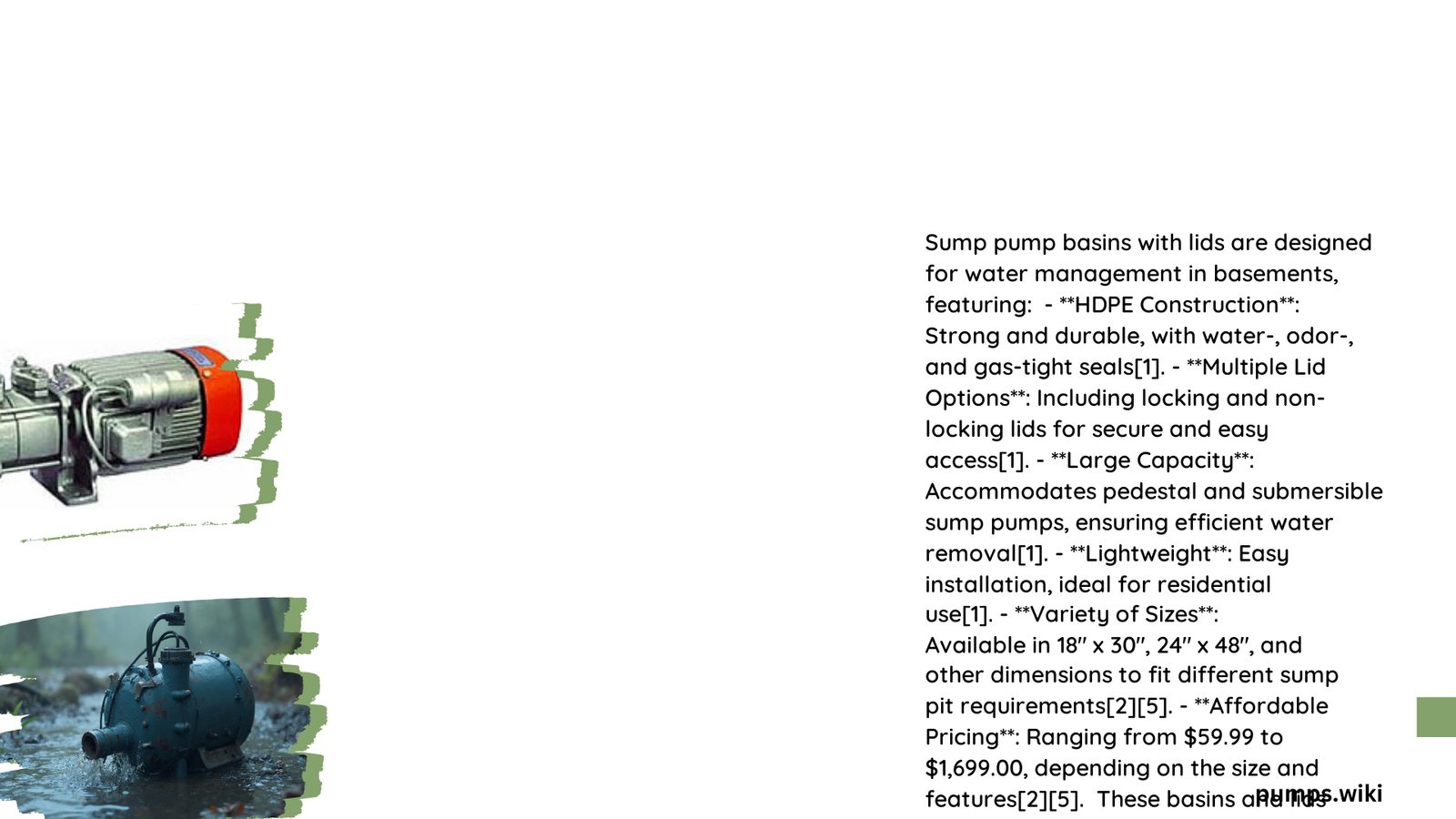Sump pump basins with lids are critical components in basement water management, providing essential protection against moisture, flooding, and potential soil gas infiltration. These specialized systems combine robust basin design with secure, sealed covers that prevent debris, reduce noise, and mitigate potential radon exposure while ensuring efficient water drainage and pump performance.
What Are Sump Pump Basins with Lids?
Sump pump basins with lids represent a sophisticated water management solution designed to collect and redirect excess groundwater away from residential and commercial structures. These systems integrate a strategically engineered basin with a protective cover, creating a comprehensive approach to basement water control.
Why Do You Need a Sump Pump Basin with Lid?
| Problem | Solution with Sump Pump Basin Lid |
|---|---|
| Water Intrusion | Prevents direct water entry |
| Debris Contamination | Blocks external debris |
| Radon Gas Risk | Provides gas-tight sealing |
| Pump Protection | Shields pump mechanism |
What Materials Are Used in Sump Pump Basin Lids?

Sump pump basin lids are constructed from diverse materials, each offering unique advantages:
Plastic Lids
- Lightweight design
- Corrosion-resistant
- Cost-effective
- Easy installation
- Limited durability compared to metal options
Metal Lids
- High strength
- Superior durability
- Excellent load-bearing capacity
- Potential rust vulnerability
- Higher manufacturing costs
Fiberglass Lids
- Exceptional strength-to-weight ratio
- Corrosion-resistant
- Suitable for multiple applications
- Moderate pricing
- Excellent thermal insulation properties
How Do You Choose the Right Sump Pump Basin Lid?
Selecting an appropriate sump pump basin lid involves considering several critical factors:
- Water Volume: Assess local groundwater levels
- Basin Location: Indoor vs. outdoor placement
- Climate Conditions: Temperature and moisture variations
- Building Codes: Local regulatory requirements
- Budget: Cost considerations
What Are Installation Best Practices?
Preparation Steps
- Excavate precise pit dimensions
- Create stable gravel foundation
- Ensure proper drainage slope
- Clean excavation area thoroughly
Sealing Techniques
- Use foam rubber gaskets
- Apply silicone caulk around edges
- Implement flexible sealant for pipe penetrations
- Conduct pressure testing
How Often Should You Maintain Sump Pump Basin Lids?
Recommended maintenance schedule:
– Annual Comprehensive Inspection
– Quarterly Visual Checks
– Immediate Repair of Detected Issues
Maintenance Checklist
- Inspect seal integrity
- Check for corrosion
- Verify gasket condition
- Test lid security
- Clean basin interior
What Are Common Challenges?
Potential issues include:
– Improper sealing
– Inadequate basin sizing
– Material degradation
– Insufficient water evacuation
Expert Recommendations
- Choose high-quality materials
- Prioritize professional installation
- Invest in regular maintenance
- Consider professional annual inspections
Conclusion
Sump pump basins with lids represent a critical investment in protecting your property from water damage. By understanding their functionality, selecting appropriate materials, and maintaining them properly, homeowners can ensure long-term basement protection and peace of mind.
Reference:
– Sump Pump Covers Guide
– Professional Installation Tips
– Maintenance Best Practices
